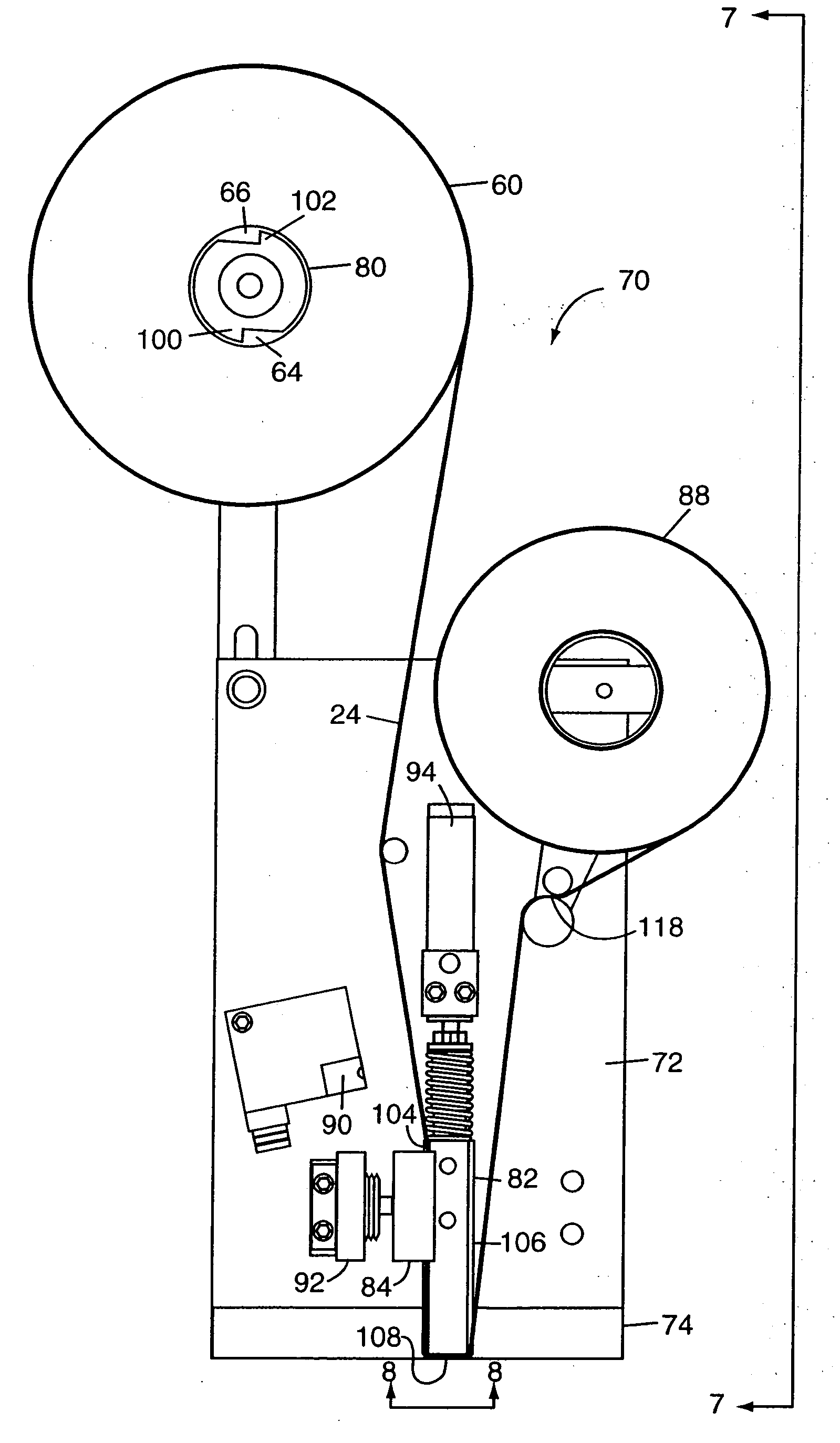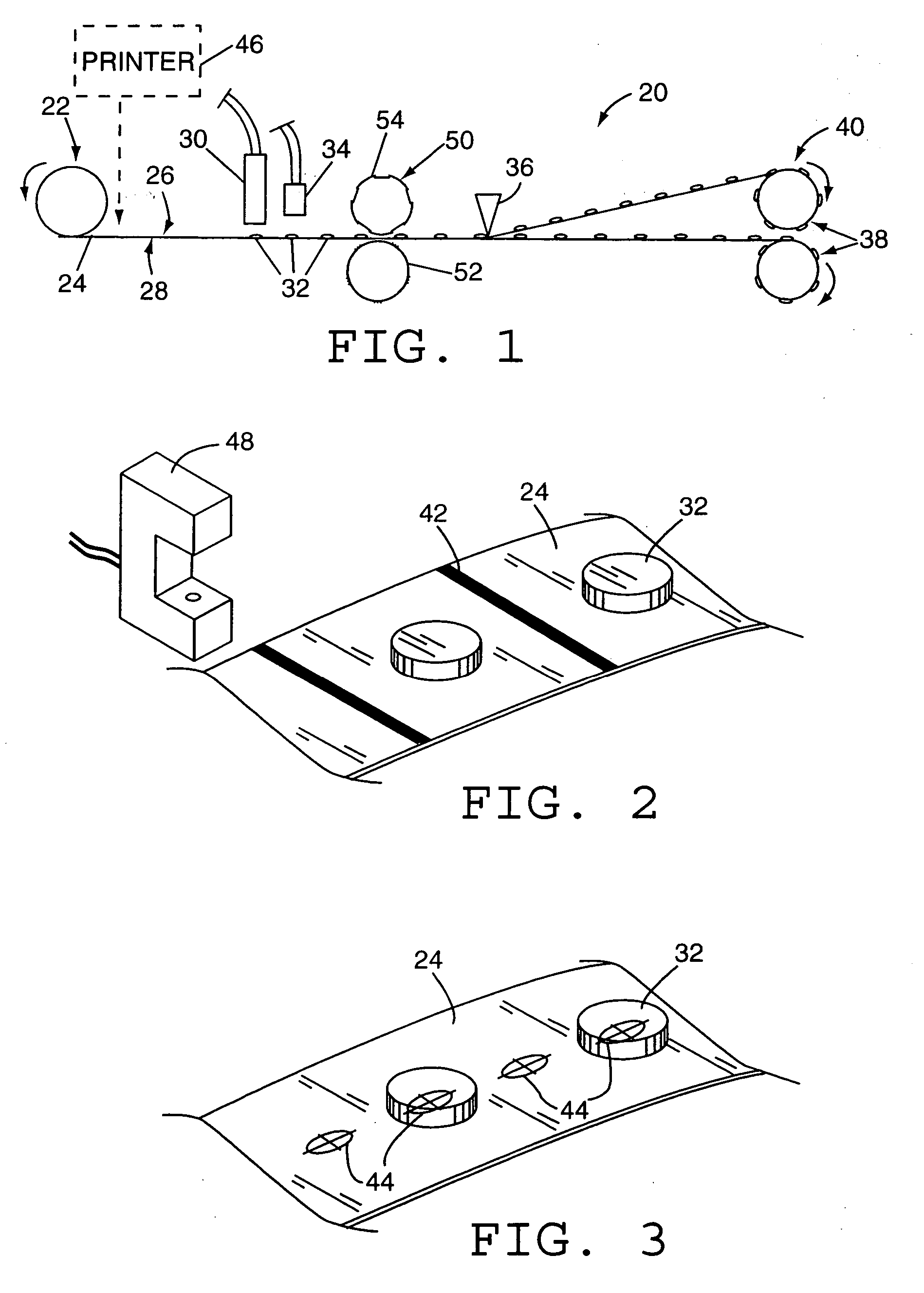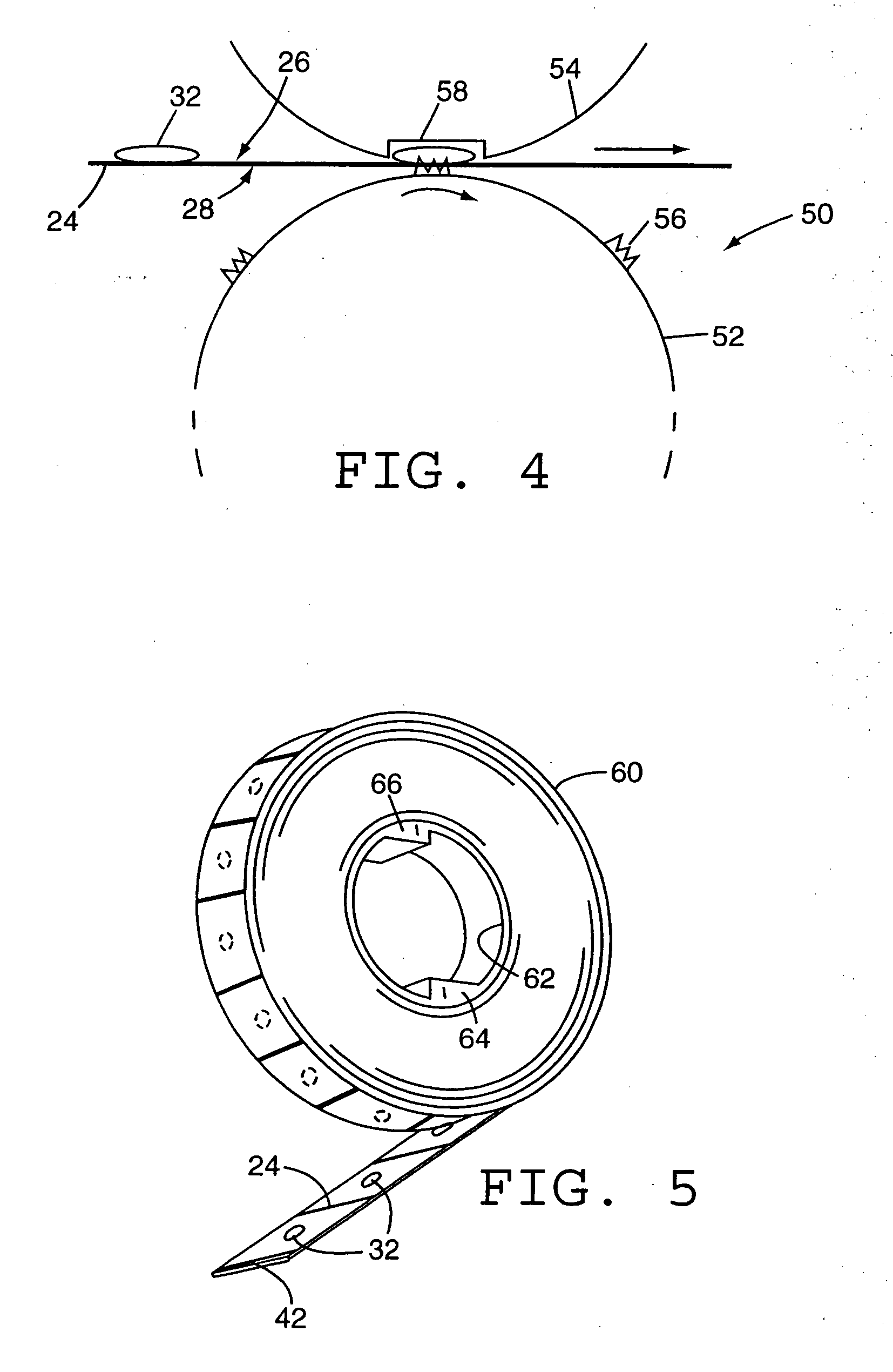Adhesive segment applicator method and apparatus and roll of adhesive segments for use therewith
a technology of adhesive segments and applicators, which is applied in the direction of chemistry apparatus and processes, thin material processing, lamination ancillary operations, etc., can solve the problems of inefficient use of “glue gun” devices, unsafe methods of applying thermoplastic adhesives to desired surfaces, and relatively high cost of using this equipment, etc. achieve the effect of facilitating the assured release of adhesive segments
- Summary
- Abstract
- Description
- Claims
- Application Information
AI Technical Summary
Benefits of technology
Problems solved by technology
Method used
Image
Examples
Embodiment Construction
[0036] The present invention provides a system and method for applying automatically adhesive segments from an adhesive segment-laden carrier release tape onto a work piece or series of work pieces, in a rapid and effective manner. The present invention may employ optical index markings on the carrier release tape to assure accurate positioning of the carrier release tape within the apparatus. The system also employs an automatic applicator method that ensures full and sure release of adhesive segments from the carrier release tape onto a work piece during the application process. Both the structure and operation of an exemplary applicator apparatus and method in accordance with the present invention, as well as the optically indexed carrier release tape used therein, and the manufacturer of such an adhesive segment-laden carrier release tape will now be described in detail herein.
[0037] An exemplary process for manufacturing an adhesive segment-laden carrier release tape for use w...
PUM
| Property | Measurement | Unit |
|---|---|---|
| flexible | aaaaa | aaaaa |
| distance | aaaaa | aaaaa |
| adhesive | aaaaa | aaaaa |
Abstract
Description
Claims
Application Information
 Login to View More
Login to View More - R&D
- Intellectual Property
- Life Sciences
- Materials
- Tech Scout
- Unparalleled Data Quality
- Higher Quality Content
- 60% Fewer Hallucinations
Browse by: Latest US Patents, China's latest patents, Technical Efficacy Thesaurus, Application Domain, Technology Topic, Popular Technical Reports.
© 2025 PatSnap. All rights reserved.Legal|Privacy policy|Modern Slavery Act Transparency Statement|Sitemap|About US| Contact US: help@patsnap.com



